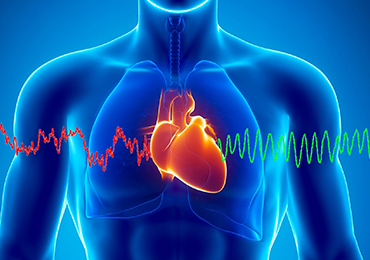The heart and the brain can communicate via several pathways: neurological, biochemical, biophysical and electromagnetic. Information flows both ways. It has long been known that the brain influences the functioning of the heart, but the heart can also significantly influence brain processes.
Stress is based on the sensation of emotions such as fear, anxiety, frustration, discouragement.... And, when it becomes chronic, it has harmful consequences for the organism.
When we feel pleasant emotions, the heart rate variability draws a regular and wide sinusoid, the heart responds to this sensation by accelerating and decelerating harmoniously creating 6 phases per minute. On the other hand, the curve presents a chaotic variability with irregular gradients and the rhythm evolves in much narrower amplitudes.
The state of cardiac coherence corresponds to a wide and regular variability of the heart rate. The effects of this state are beneficial to our entire physiology. When it is coherent, the rhythm generated by the heart is able to synchronize several physiological systems (breathing, brain waves, blood pressure, ...). These signals are transmitted to the brain and have an impact on our perception of our impact on the perception of our environment and cognitive functions (mental clarity, easier to take a step back ...).
The following sound tool allows you to perform the exercise intuitively for about twenty minutes:
1. Adjust your nasal breathing to the rhythm of the sound.
2. Breathe in the most regular way, in a continuous flow, without pause.
3. Pay full attention to the breath.
4. Continue with the experiment even if discomfort appears, it should pass gradually.
5. Repeat when you feel stressed, thinking....

